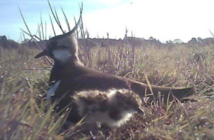A welcome period of cold weather has brought black-grass growth to a halt; now growers should consider applying a post-emergence herbicide in wheat crops as soon as conditions are warm enough to take advantage of small, susceptible weeds.
The recent cold spell arrived at just the right time; after a fairly mild Christmas there was a danger that black-grass would grow vigorously throughout winter as Bayer’s Darren Adkins explains: “It was slightly worrying through December and we didn’t have any really cold weather until mid-January. At one stage, it was beginning to look similar to 2015-16 where everything looked great going into winter, but wet and mild conditions caused the black-grass to tiller like crazy. That season it was too wet to apply any post-em and the subsequent headcounts very high even where plant counts were quite small.”
The danger of a situation as bad as 2015-16 seems to have passed thanks to the cold weather but black-grass is still present in the crop. Where populations are low enough the priority is to apply a post-em such as Monolith (mesosulfuron + propoxycarbazone) as soon as possible.
“Like any post-emergence herbicide, the aim is to apply Monolith when the weed is as small as possible,” says Mr Adkins. “At the moment most black-grass is still at the 2–3 leaf stage, if conditions warm up and the plants wake up, we would expect decent results applying in February or early March.”
Plant size is one of the main enemies of post-em efficacy. Most black-grass has some degree of metabolic resistance where it can break down the herbicide before it takes effect. Larger plants have far more capacity to metabolise, so hitting plants when they are small means that you may overcome metabolic resistance.
Although small plants are the norm, there is already some black-grass tillering according to AICC agronomist Peter Brumpton based in Nottinghamshire. “The situation is variable but in general, later drilled crops are cleaner with smaller surviving black-grass plants. However, there are patches in some fields that have higher black-grass numbers that are beginning to tiller. In these areas, I think the best option is probably to spray off with glyphosate because the plant counts are too high to get any useful additional control.”
If post-ems are planned, finding a suitable application window is always a challenge in early spring. Unlike spring 2016, ground conditions are reasonable for the time of year, so heavy land farms may be dry enough for sprayers following a week of decent weather.
“Active growth is essential to get a good result,” says Mr Adkins. “Ideally, you want to apply about a week after the end of a cold spell – this means the black-grass will be awake and taking in the herbicide, but it won’t have grown too much and still be susceptible.” In addition, the weather needs to be settled with little wind and good drying conditions – which at this time of year probably means sunshine as overcast days tend to remain damp.




